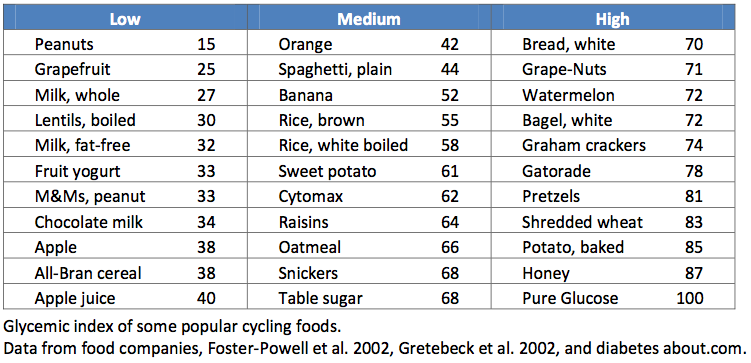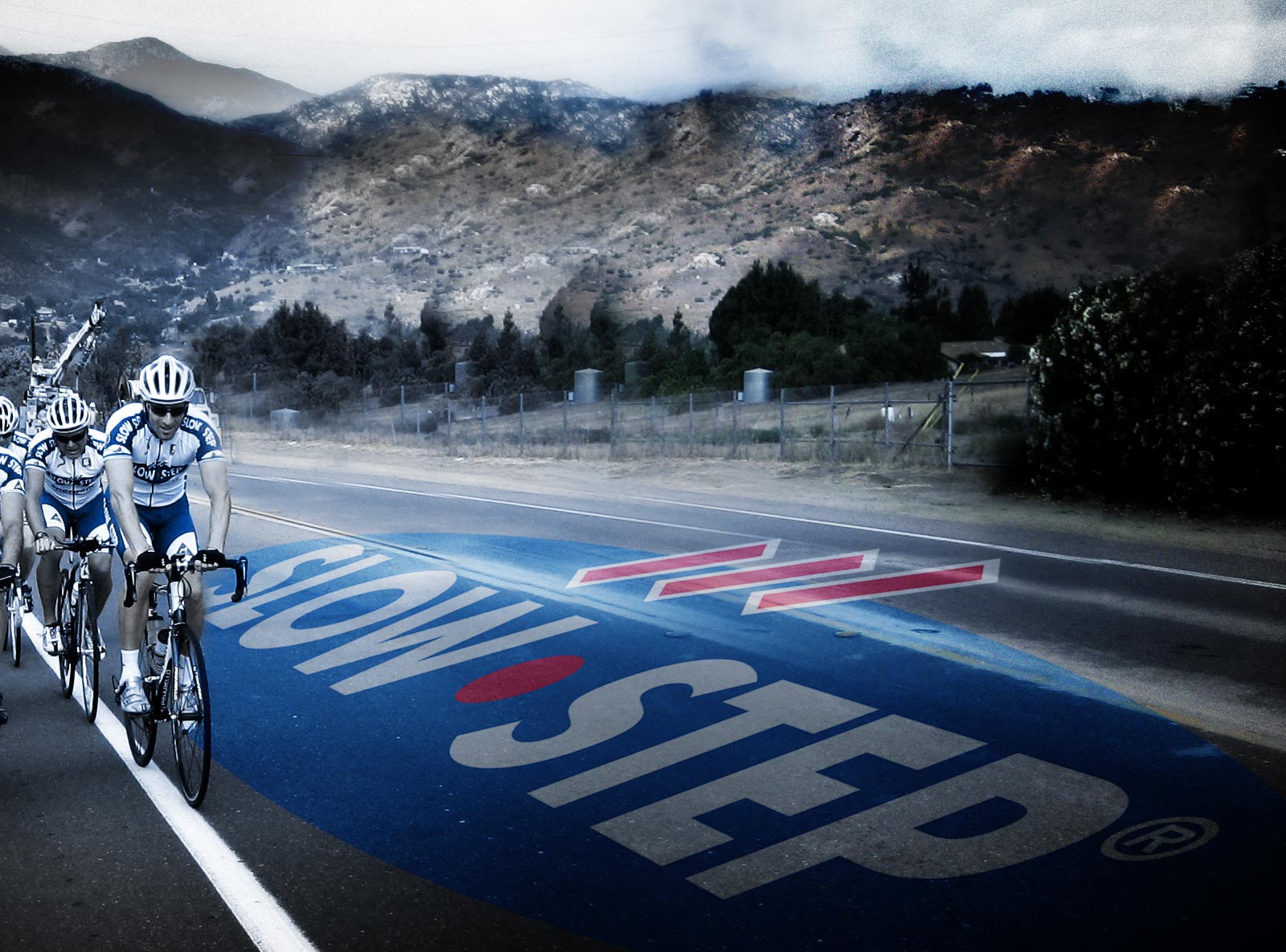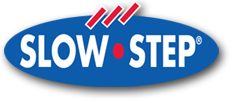Before:
The most important pre-exercise consideration is to make sure carbohydrate stores are topped off. It is safer to do this with familiar foods that are well tolerated by the athlete, rather than experimenting with new foods. Secondly, consider not consuming high glycemic index1 (GI) foods or drinks just prior to racing/training.
Consumption of lower GI foods 30 to 60 minutes prior to endurance exercise may promote some positive effects during exercise including: (1) Minimizing the hypoglycemia (low blood sugar) that occurs at the start of exercise, (2) Increasing the concentration of fatty acids in the blood, and (3) Increasing fat oxidation and reducing reliance on carbohydrate fuel. This carbohydrate sparing can prolong your endurance and helps prevent the “bonk.” During endurance sports, particularly cycling and running, “hitting the wall” or the “bonk” may refer more to hypoglycemia (low blood glucose) in an athlete than muscle glycogen depletion. Muscles may have adequate glycogen stores, however if the liver cannot keep up with the demands for blood glucose you will bonk. This can usually be avoided by ensuring that glycogen levels are high when exercise begins, maintaining glycogen levels during exercise by eating or drinking carbohydrate-rich foods, or by reducing exercise intensity.
The glycemic index (GI) is based on the rate of absorption of carbohydrate into the blood and rise of blood glucose (blood sugar) levels. It was developed in the early 1980s to aid in the management of diabetes. The GI ranges from 0 to 100 (100 being pure glucose). Carbohydrates that breakdown quickly during digestion have the highest glycemic indexes. Their blood sugar response is fast and high. Carbohydrates that break down slowly, releasing glucose gradually into the blood stream, have low glycemic indexes. Consuming fat or protein at the same time, and the addition of fiber can lower the glycemic index. Cooking usually raises the glycemic index of foods. Research concerning the glycemic index and performance in athletes is limited. Recommendations concerning carbohydrate choices are still tentative.

During:
For longer events and training, consuming carbohydrate at 0.7 grams/kg/hr (approximately 30 to 60grams) has been shown to extend endurance performance. Consuming carbohydrate during exercise is even more important in situations when athletes have not carbohydrate-loaded, consumed pre-exercise meals, or restricted food intake for weight loss. Carbohydrate intake should begin shortly after the onset of activity; the American College of Sports Medicine (ACSM) states that consuming a given amount of carbohydrate after two hours of exercise is not as effective as consuming the same amount at 15 to 20 minute intervals during the first two hours of activity. If the same total amount of carbohydrate and fluid is ingested, the form of carbohydrate does not seem to matter—some athletes may prefer to use a sport drink whereas others may prefer to eat solid foods or gels and consume water.
After: (the glycogen window)
Muscles act like a sponge for nutrients during exercise and immediately afterwards. (They by-pass insulin-dependent mechanisms for nutrient uptake and speed the rate of glycogen replenishment and muscle recovery.) This sponge like window is known as the “glycogen window.” It slowly closes over a period of a few hours. That is to say, consuming a carbohydrate-rich meal immediately after exercise is more effective for glycogen replenishment and muscle recovery than consuming the same amount a few hours after exercise. Following exercise the primary concern is to replenish depleted glycogen stores. The ability to replenish these stores fully determines how ready an athlete will be the next day for another workout. It is at this time where a high GI carbohydrate may have the ability to shuttle glycogen into the cells quicker and more efficiently than low or moderate GI carbohydrates. Try to consume high GI carbohydrates, if none are available, then grab any carbohydrate that is, and swallow it down with water. Whether the addition of protein and fat to this post-exercise feeding will produce further benefits (such as increased rate of glycogen storage, intramuscular fat replenishment, improved protein balance, and reduced muscle damage), is controversial.
Remember, about 1,500 calories are stored in the muscles for energy use as glycogen, and about 2,500 calories are stored in the muscles for energy use as intramuscular fat. It’s like a dual energy tank that you want to keep topped off as often as possible.
To maximize glycogen storage, consider replacing carbohydrate at the rate of 0.7 to 1.0 grams/kg in the first 30-minutes after exercise; repeat in each of the next three hours.

